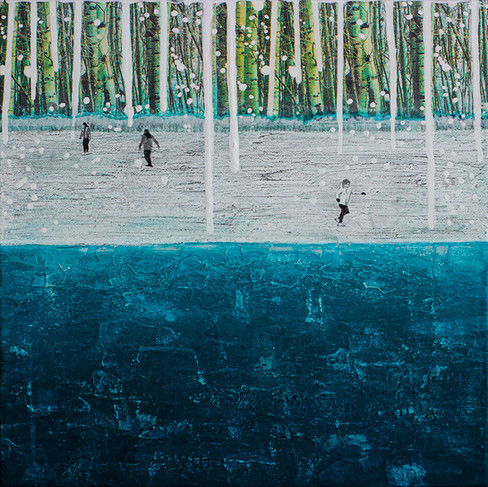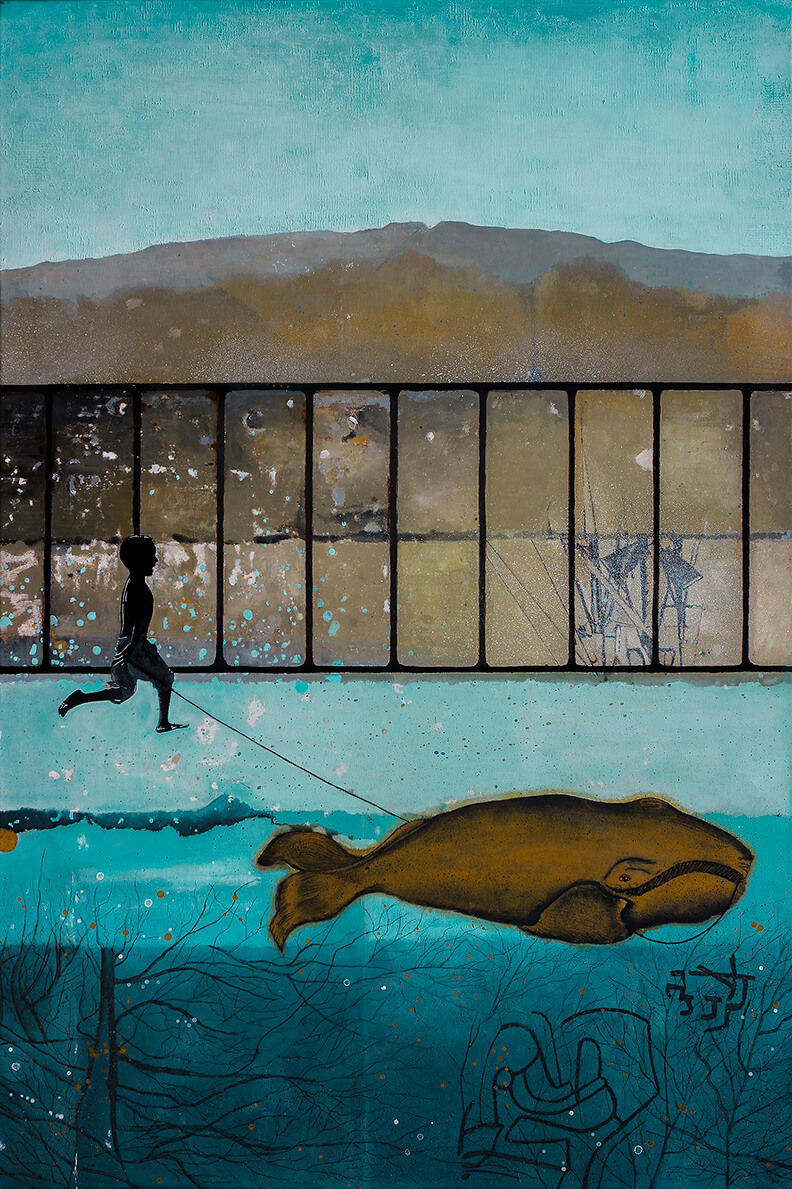Why weathered rough textures are so appealing
- dbwaterman
- Jun 22
- 5 min read
Updated: Aug 4
A peeling wall with old paint residue can sometimes be more beautiful than a freshly painted surface.
There is beauty in a wall covered with torn and worn posters, a rusted surface, or a weathered wall.
For many people, the real power of art lies not in perfection, but in the traces that life has left behind. Weathered art touches us because it shows that something has lived but does not remain as it was—and there is something comforting, something real about that.
As an artist, I am fascinated by transience. Whether it is an old wall that has changed over time, wooden panels with weathered paint, or a landscape that has been damaged. I love things and people that have been through a lot and are clearly marked by life.
About 13 years ago, I started working with old magazines, paint remnants, torn posters, and all kinds of attributes with which I could make stamps. Using collage, image transfer, and layers of acrylic paint, I transformed these remnants into new works of art.
What began by chance as a search for a new way of working grew into my own unique visual language: a world of weathered rough textures, damaged structures, yellowed papers, and forgotten words.
The emotion of weathered rough textures
Rough textures evoke a certain feeling in all of us. Everyone recognizes the image. They evoke something that smooth surfaces cannot: recognition, a sense of authenticity, experience, time. When you look at a weathered wall, full of cracks, stains, or rust spots, something instinctive happens. You want to feel the wall with your hands, understand why it has become that way. The visual roughness activates our memory, our imagination.
The same thing happens in weathered art. The damaged surfaces are not just an aesthetic element. They have content. They bear traces of time. Every layer—from peeling paint to yellowed paper—tells a story. It is art that does not shout, but whispers. And that whisper often resonates more strongly.
From waste material to meaning
My own unique mixed media technique arose from a love of transience and weathered surfaces.
In the beginning, I worked with old magazines, newspapers, and scraps of paper. I incorporated the old images and texts together with acrylic paint into a new composition. Through collage and image transfer, I was able to layer images on top of each other, causing pieces of text to fade or light up under transparent acrylic paint.
I usually used multiple layers on top of each other, brushing and sanding away parts so that the layers underneath became visible again.
Because I came up with this way of working myself, it felt like a victory to see the results it produced.
The rough surface, often created with a heavy gel acrylic layer, combined with the collage layers, gave my work that layered, almost tangible quality. The use of natural tones, damaged edges, tears, and torn images made the result feel like something that had always been there, but at the same time as if something new had been born.
This process is intuitive. Sometimes I let paint drip, then I scratch and polish parts away. Rusty or weathered surfaces, old texts, or stains can arise accidentally or be added deliberately. What emerges is never a sleek and smooth work of art, but rather a work of art where everything is exactly in its place. Each work is unique, a combination of chance, material, and memory.
Weathered walls as a landscape of time
For me, weathered walls overgrown with weeds, damaged surfaces, concrete with rust stains or peeling paint are not objects.
They are landscapes.
They are possibilities for a new image, a new landscape. They carry the echo of life, of use, of memory. In my work, I try to capture that visual nostalgia and melancholy: sometimes by imitating it, but also by incorporating it into new art images.
I often work with suggested walls: structures that resemble peeling paint, surfaces with traces of posters that once hung somewhere. By combining collage, acrylic, and transparent layers, a play of visibility and disappearance is created. Some parts show what once was—others I deliberately leave hidden.
This visual layering makes the viewer curious and raises questions about the story behind the artwork. What am I actually seeing? Why are parts missing? What is old, what is new? The images are abstract, but often feel familiar. As if you have seen them somewhere before.
The beauty of transience
Everything changes, disappears, and wears out. This evokes a feeling of melancholy, but also of security and tranquility. There is comfort in transience. In an age where everything is fast, sleek, and digital, I try to offer a counterbalance with weathered art. With my images, I want to return to slowness, to attention, and to love for imperfection.
Rusty surfaces, rough textures, cracks, and stains are not only visually interesting, but also emotionally charged. In my work, I search for the silent layers beneath the surface. They remind us that everything has lived and has a past. I want to revive these layers in my artworks and give them new power.
This idea is closely related to the Japanese concept of wabi-sabi , which sees beauty in the imperfect, the temporary, the simple. In the world of wabi-sabi, a broken vase is more valuable than a new one, precisely because of its scars. The same is true in my mixed media artworks: what is weathered is alive.
Weathered art as comfort and confrontation
I am well aware that weathered art is not always easy. It is not decoration, nor is it a polished statement. These are usually images that really need to suit an art lover. They can be abrasive, raise questions, make you sad, or, conversely, fill you with hope.
But it is precisely this layering in my weathered mixed media paintings that lingers because of the story they tell. As I will describe in one of my next blogs, art is sometimes a form of comfort.
In the damaged, rough, and weathered, we can recognize something of ourselves. And that is why these kinds of images touch us: they hold up a mirror to us. Artworks with weathered layers and rough textures show that there is beauty in what remains, in what is not perfect, in what comes through.
Are you curious to see how these themes come to life in my work?
You are always welcome to visit my studio gallery at Strijp-S in Eindhoven, or take a look at my online portfolio.


























